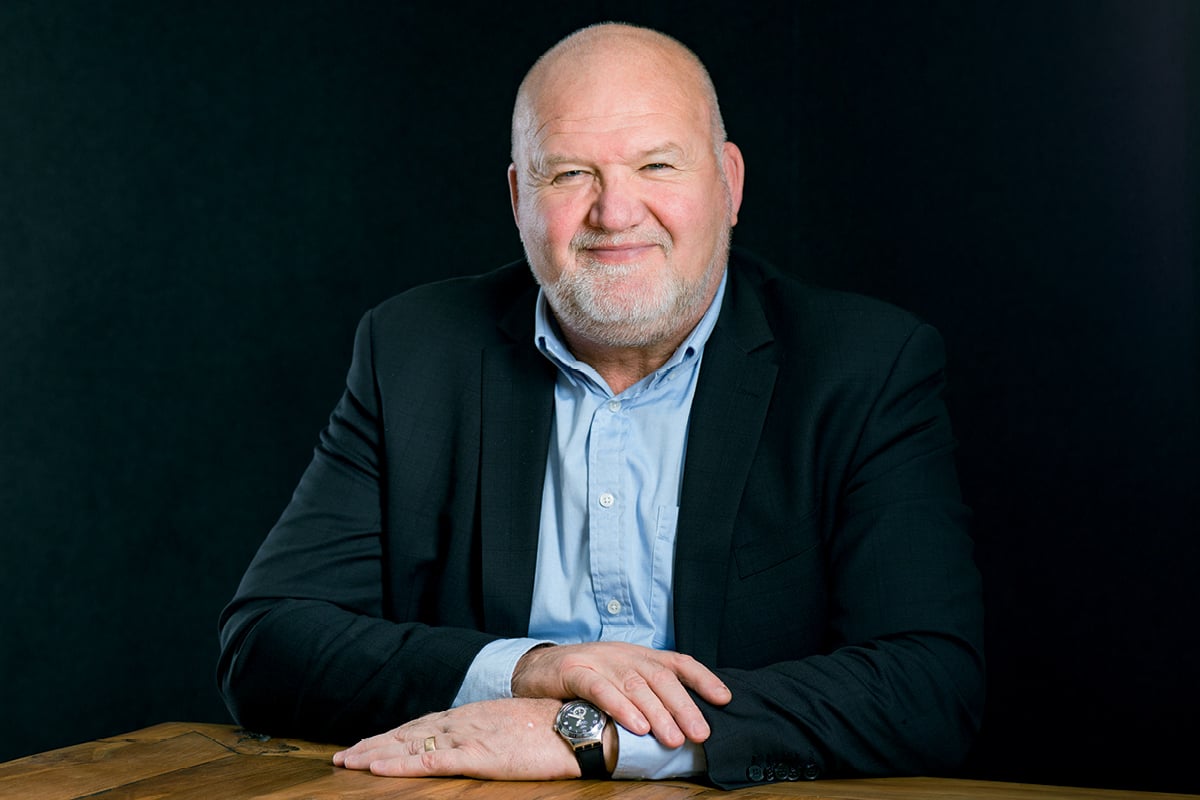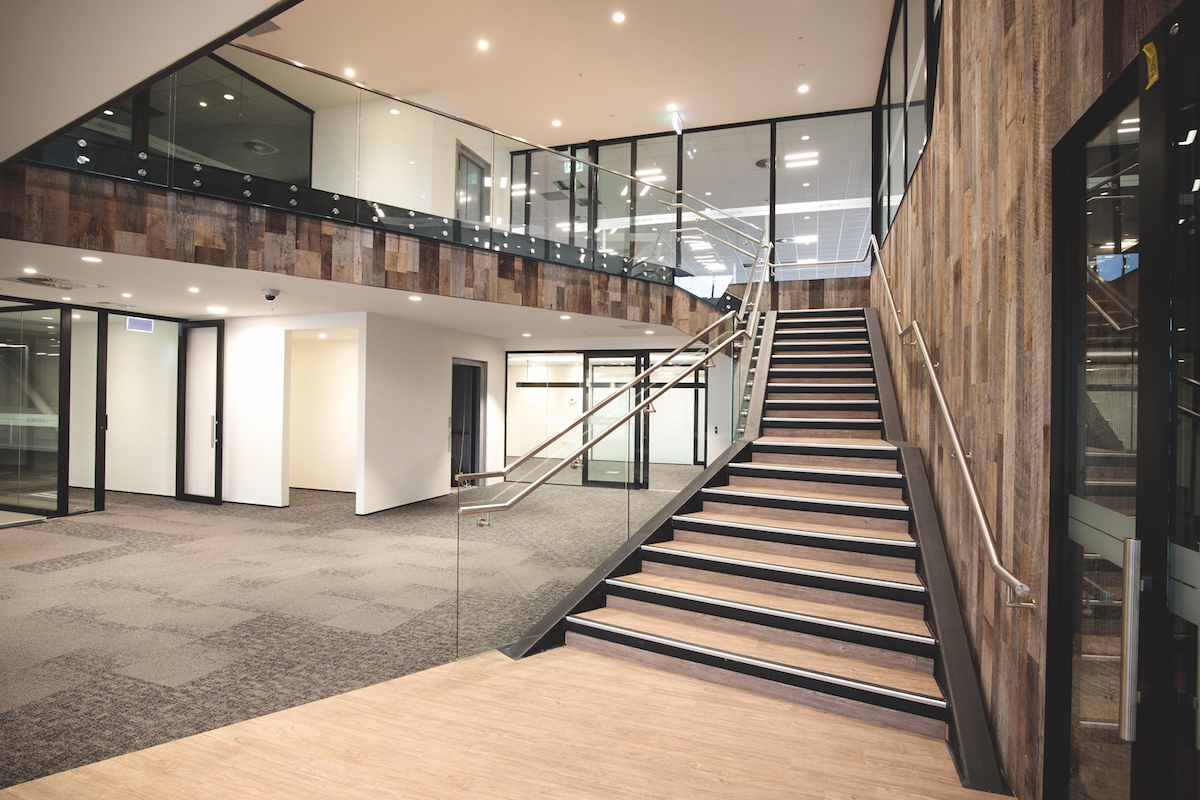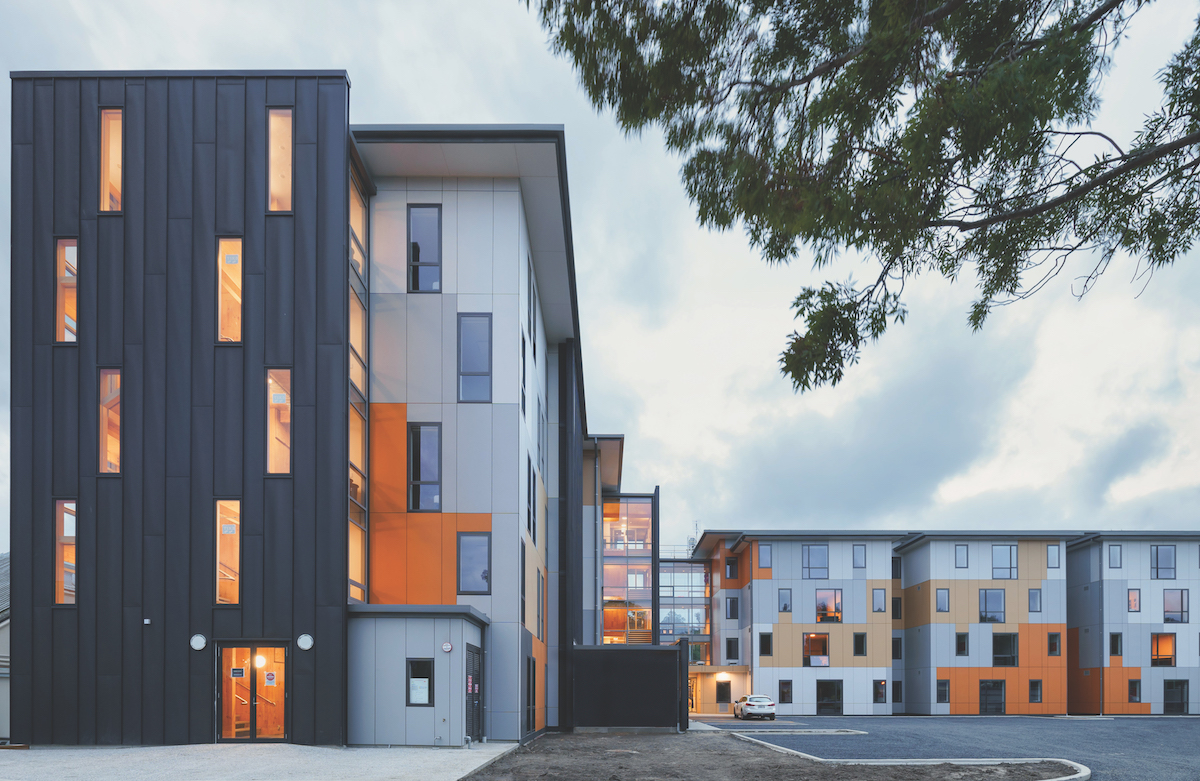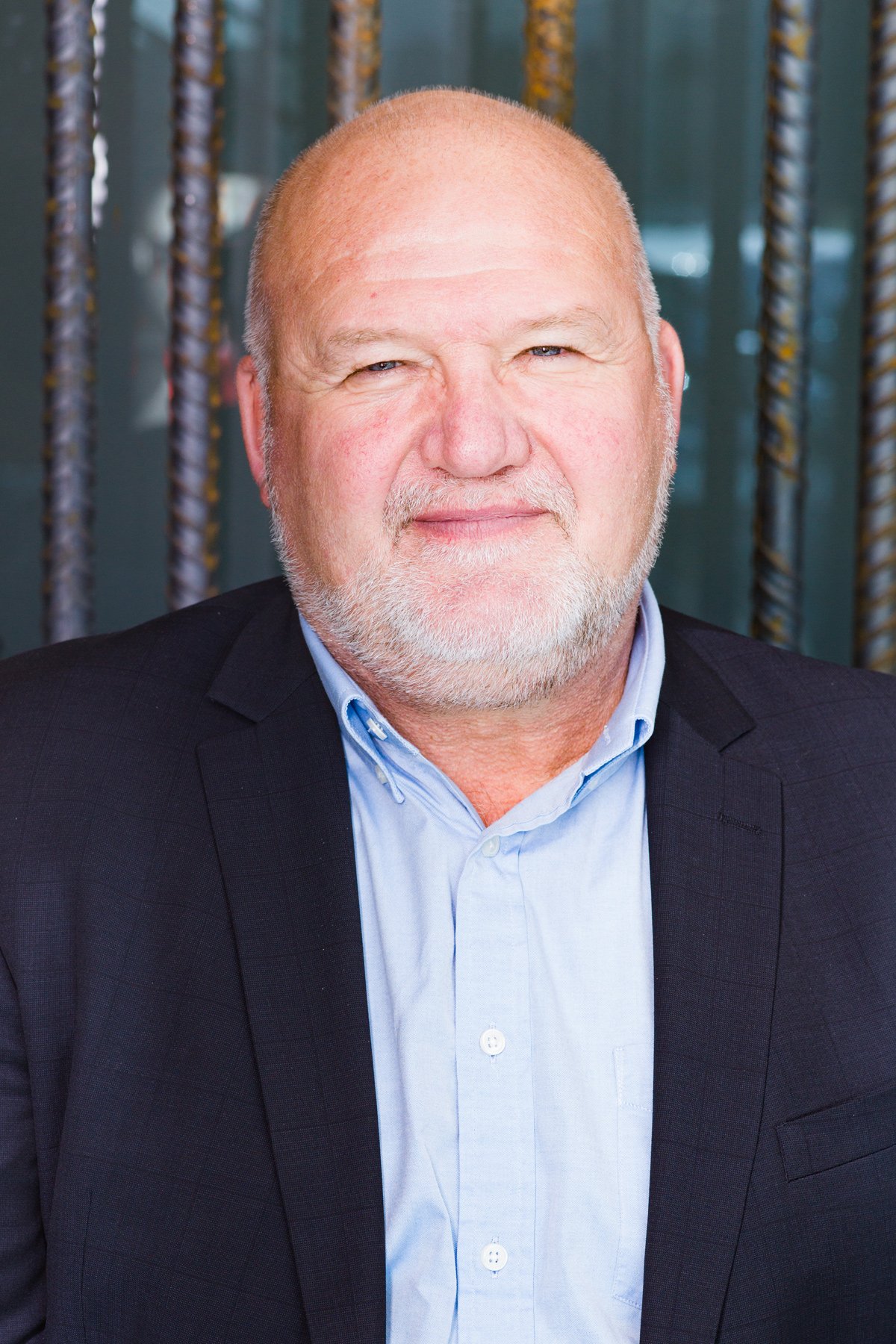Having been in the construction industry for 45 years, Naylor Love CEO Rick Herd gives the following advice when it comes to leadership. “You’ve got to be able to listen and put yourself in the other person’s shoes. You’ve got to have empathy; genuinely care about people; and be prepared to change your mind when there’s a better idea or better way.”
“You’ve got to have empathy; genuinely care about people; and be prepared to change your mind when there’s a better idea or better way.”
Rick adds that a sense of humility is just as important. “You’re not always right,” he continues. “If you’ve got people who see you as arrogant, a know-it-all and not caring, you won’t get a great response or engagement from your people.”

Idea of listening
This idea of listening is something Rick would have advised his younger self in light of his career development. “I used to be a bull at a gate with everything I did and often did not listen to people or care about their feelings,” he continues. “I was very task focused and always had this drive to get things done. I’ve learned that as, a leader, you have to listen. It’s not about doing things yourself, but about coaching people and getting them to do their best. I have been quite successful in recent times in surrounding myself with people brighter than I am and helping them and developing them to do their best, rather than me trying to do it all myself.”
It has been two years since Rick first spoke with The CEO Magazine and in that time the New Zealand construction company has made big strides in terms of continued improvement. It was awarded Most Improved Large Workplace at the IBM Best Workplaces Awards in New Zealand for an improvement in staff levels and staff engagement.
“We have measurably lower staff turnover than other organisations in the construction industry,” Rick says. “That high level of staff engagement and sense of belonging is the greatest sense of achievement I’ve had. Also, the fact that we’ve had continued profitability of the business and an increasing client portfolio at a time that’s relatively tough.”
Rick’s overall vision for New Zealand’s construction industry is for it to get to a point where the boom and bust cycles it has experienced historically have less impact on the country. “There have been so many times in my career where I’ve seen good people leave the industry or go overseas because of the lack of work,” Rick says. “The vision of a steady, sustainable and profitable construction industry is what I want to see in this country because that will encourage construction companies to invest in research and development, and in training their people.”
Rick explains that the industry as a whole is buoyant, but breaking it down into its three distinct sub-sectors, he gives greater detail into their strengths and weaknesses. The first one he mentions is the infrastructure sector (often referred to as the horizontal sector), which has a limited number of contractors. “It’s harder to set up in that industry,” he explains. “You generally need a lot of heavy plant. So, it takes a lot of capital to get established in that industry.”
The other issue is that there is a smaller number of clients for this sector. “You have more sophisticated project procurement techniques and models here,” Rick says. “You have the New Zealand transport authority, a government organisation that looks after the country’s roads,” he continues. “Then you’ve got the local bodies, local councils, airport companies, and that’s pretty much it.” However, Rick adds this also means higher margins and relatively low numbers of contractual disputes for construction companies.

The next is the vertical commercial sector, which is very competitive. “If somebody knows how to construct a building and can convince a client to give them a contract, they can set up reasonably easily without spending a lot of money,” Rick says. “That’s because what they’re doing is working with these subcontractors’ and suppliers’ money until the first progress payment comes through, and then they are paying their bills. That makes it very easy to set up in the commercial sector.”
However, it creates a highly fragmented market, meaning there is a lot of competition. This creates further challenges down the line. “It drives low margins that are not commensurate with the risks the sector takes on,” Rick adds. “Boom and bust cycles and the lack of profitability in this sector, over the past half-century at least, is the underlying reason for insufficient training and the current lack of skilled resources, and lack of investment in research and development, which restricts productivity improvement. The sector overcomes weak productivity by working long hours, which has an enormous impact on the wellbeing of the employees and adds to the difficulty of attracting people for long-term careers.”
The residential sector, however, is different as it is made up of many smaller ‘cottage builders’, as Rick calls them. “This could be one or two tradesmen and a labourer who might build one house or a couple of houses at a time,” he says. “They tend to be small- and medium-sized enterprises, and the risks are a lot lower because the opportunities to lose money are fewer. But the numbers being talked about are smaller too.” Rick warns that the residential sector sees a high rate of SME failure often due to over-commitment or lack of business management skills, but the sector is generally healthy given the high demand for houses in New Zealand.
Times have been tough for New Zealand’s construction industry in recent years, particularly following the failings of three of its biggest construction companies – Mainzeal, Fletcher Building and Hawkins. Mainzeal went into receivership, and later liquidation, in 2013, Fletcher’s Building and Interiors division faced major losses of NZ$660 million, and Hawkins was acquired by Australian-based Downer EDI.
Safety and risk management
Rick suggests these failings could have been avoided if there had been proper risk management when undertaking projects. “Nobody made them sign those contracts,” Rick says. “And if management were on top of their game, they would’ve understood those risks and either refused to book the work or negotiated alternative terms. For example, a couple of the large projects that Fletcher got into trouble on, we looked at the contract documents for that and refused to bid for them, because they had unreasonable terms and conditions. So, my view is, if all contractors said, ‘We’re not going to bid for that’, then it forces the clients into a situation where they’ve really got to meet the market requests.”

To solve these risk management issues, Rick suggests a greater focus on contracts engineers. “An engineer to the contract is appointed to be an adjudicator or a referee between the client and the contractor,” he explains. “They’re there to advise both client and contractor of their rights and what the contractual situation between them is.
“If that position is appointed appropriately, you have a competent person who understands the contracts and the laws reasonably well but is also impartial towards the contractor or the client. It works because if a dispute starts to arise, the contracts engineer will say, ‘Hang on, Mr Contractor, the client is right under these circumstances’, or conversely, ‘Sorry, Mr Client, the contractor actually has some rights here. You need to listen and talk to them about this, or you’ll end up in a dispute’.”
Rick adds that these days, more often than not, contracts engineers don’t understand the contracts sufficiently, or are biased towards the client. “What that means is there’s a much greater possibility for disputes to develop,” he continues. “So the industry needs to move back towards where we were 50 years ago, where we had genuinely impartial and highly competent contracts engineers. We’re seeing fewer of these people in the current market.”
Naylor Love takes risk management very seriously. “The construction industry is all about managing risk. It’s the name of the game,” Rick says. “And so, all their processes involve managing risk, one way or another – whether that be health and safety, commercial risk, or quality subcontractor management. We have highly developed business systems which we continually work on for improvement. We have six regional offices, and experts in each area of operations get together on a regular basis to go through the processes we’re running and continually improve those. These functional groups also hold forums for suggestions for improvement that might come through.”
“The construction industry’s all about managing risk. It’s the name of the game.”

And this ties in well with the company’s strong focus on safety. “We have a very positive culture towards health and safety,” Rick notes. “Our team don’t believe they’re just running health and safety systems for the sake of it. It’s not a culture where we just comply with rules. We’re trying to make a difference and actually improve health and safety performance, so we put a lot of effort into focusing on the critical risks that could potentially result in serious harm or a fatality.”
With this focus on health, safety and risk management, the company is big on implementing forward planning. “Management of risks for the operational delivery contract goes hand in hand with health and safety,” Rick continues. “So when we sit down and plan a project, we look at how we’re going to build it, and that’s as much about productivity and efficiency as about health and safety.”
For Rick, the biggest challenges facing New Zealand’s construction sector are the lack of skilled people in the country and over-commitment of many subcontractors, which impact on the supply chain. “It’s about developing close relations and solid strategic alliances across a broad range of the supply chain. It means continuing to find the skilled people we need and that’s going to be a matter of recruiting, training and developing internally as we grow.”
Rick describes the work culture at Naylor Love as one that fosters a strong sense of belonging. “There’s an underlying family atmosphere because we’re a privately owned company,” he says. “I get feedback from staff surveys about how people are feeling about the company and that sense of belonging comes through very strongly.”
And keeping this culture means hiring the right people from the get-go. “You can train for skills, but you can’t train for attitudes,” Rick says. “So we employ people with a positive outlook and attitude. Sometimes you have to accept that they might not have the skills you’re looking for but if they have a willingness to learn and contribute, they will get there.”

Success factors
Looking at the business internally, Rick bases its success primarily on profitability. “It’s a bit like breathing,” he says. “If you don’t breathe, you die, and so you have to make a profit or you’ll die.”
But there are two other factors that rank a close second: satisfied clients and low levels of staff turnover. “We benchmark our performance through our clients post-tender, getting feedback on areas for improvement. So when we get high levels of client satisfaction and a desire to continue working with Naylor Love, those are high levels of success that we strive towards.”
However, for Rick personally, success means seeing the company’s people succeed. “Seeing young people develop and take over senior roles gives me personal satisfaction,” he says. “About 22% of our employees fall into the category of baby boomers. And one of the things I tell my workers is that the opportunities for staff going through and taking on senior roles is increasing because many people like myself are moving towards retirement.”
The next phase for Naylor Love is to redevelop. “We’ve been focused on sustainability and growth over the past five years and we now need to look much further afield at what Naylor Love is going to be in the next five to 10 years,” Rick says. “It’s a blank page at the moment, but we’ll possibly look at diversifying our project portfolio. We might get into prefabrication, modularisation or mechanical, industrial projects. We may even start looking at our own property portfolio and property development.”
Rick is optimistic about what the future will hold for Naylor Love and the broader construction industry. “We’ve always said our vision is to be the best construction company in the country – not necessarily the biggest, but the one that the clients would see as their first choice to be contractor.”
“Our vision is to be the best construction company in the country.”


